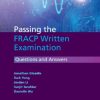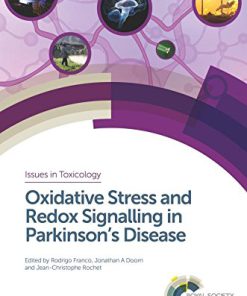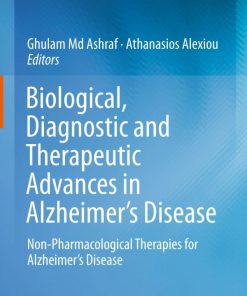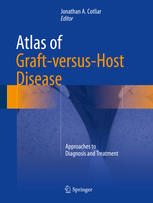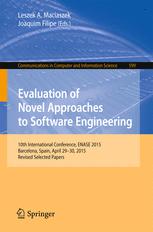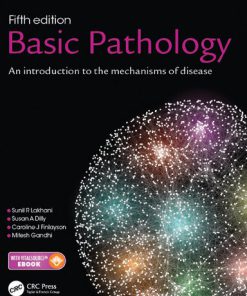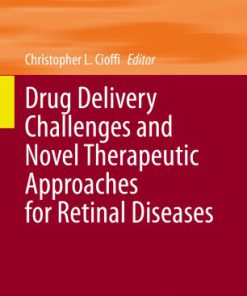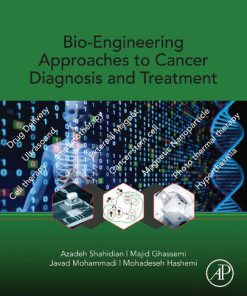Novel Therapeutic Approaches to the Treatment of Parkinson s Disease An Overview and Update 1st Edition by Corey Hopkins 3319399263 9783319399263
$50.00 Original price was: $50.00.$25.00Current price is: $25.00.
Novel Therapeutic Approaches to the Treatment of Parkinson s Disease An Overview and Update 1st Edition by Corey R. Hopkins – Ebook PDF Instant Download/DeliveryISBN: 3319399263, 9783319399263
Full download Novel Therapeutic Approaches to the Treatment of Parkinson s Disease An Overview and Update 1st Edition after payment.
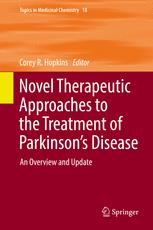
Product details:
ISBN-10 : 3319399263
ISBN-13 : 9783319399263
Author: Corey R. Hopkins
Medicinal chemistry is both science and art. The science of medicinal chemistry offers mankind one of its best hopes for improving the quality of life. The art of medicinal chemistry continues to challenge its practitioners with the need for both intuition and experience to discover new drugs. Hence sharing the experience of drug research is uniquely beneficial to the field of medicinal chemistry. Drug research requires interdisciplinary team-work at the interface between chemistry, biology and medicine. Therefore, the topic-related series Topics in Medicinal Chemistry covers all relevant aspects of drug research, e.g. pathobiochemistry of diseases, identification and validation of (emerging) drug targets, structural biology, drugability of targets, drug design approaches, chemogenomics, synthetic chemistry including combinatorial methods, bioorganic chemistry, natural compounds, high-throughput screening, pharmacological in vitro and in vivo investigations, drug-receptor interactions on the molecular level, structure-activity relationships, drug absorption, distribution, metabolism, elimination, toxicology and pharmacogenomics. In general, special volumes are edited by well known guest editors.
Novel Therapeutic Approaches to the Treatment of Parkinson s Disease An Overview and Update 1st Table of contents:
Adenosine A2A Receptor Antagonists
1 Introduction
2 Xanthine-Based A2A Antagonists
3 Tricyclic A2A Antagonists
4 Bicyclic A2A Antagonists
5 Monocyclic A2A Antagonists
6 Radiolabeled A2A Antagonists
7 Dual A2A and MAO-B Inhibitors
8 A2A Antagonists with mGlu4 PAMs
9 Summary
References
Targeting α-Synuclein as a Parkinson´s Disease Therapeutic
1 Introduction
2 α-Synuclein Structure, Function, and Pathogenic Misfolding
2.1 α-Synuclein Populates an Ensemble of Native and Pathogenic Structures
2.2 Natively “Unfolded´´ Monomers Are the Amyloidogenic Precursor
2.3 Intramolecular Interactions as Determinants of Aggregation
2.4 Toward an Understanding of α-Synuclein Function
2.5 Multimeric Intermediates: Defining the Identity and Pathogenicity of Oligomers
2.6 α-Synuclein Fibrils: The Pathological Hallmark
2.7 α-Synuclein Membrane Association
3 Posttranslational Modifications of α-Synuclein Affect Its Aggregation
3.1 Oxidation and Nitration
3.2 Dopamine-Modified α-Synuclein: Pathogen or Innocent Metabolic By-Product
3.3 Phosphorylation
4 Defective Turnover and Clearance as a Consequence of α-Synuclein Aggregation
5 α-Synuclein “Strains´´ and Prion-Like Transmission
6 Experimental Approaches Targeting Misfolded α-Synuclein
6.1 Modulating SNCA (α-Synuclein) Gene Expression
6.2 Small Molecules That Target α-Synuclein Aggregation
6.3 Additional Inhibitory Interactions Between Small Molecules and α-Synuclein
6.4 Biologics: Peptides and the Promise of Immunotherapy
7 Molecules That Inhibit Downstream Toxicity of α-Synuclein
7.1 ER-to-Golgi and Other Vesicular Trafficking Pathways
7.2 Blocking Deleterious Effects in the Nucleus
7.3 Mitochondria
7.4 Enhancing Clearance of Toxic α-Synuclein Aggregates
8 Summary, Conclusions, Outlook
References
Leucine-Rich Repeat Kinase 2 (LRRK2) Inhibitors
1 Introduction
2 LRRK2 Biology and Pharmacology
2.1 LRRK2 Genetics and Human Biology
2.2 LRRK2 Substrates
2.3 Effects of Mutations on Kinase and GTPase Activity
2.4 Role of LRRK2 in Normal and Pathological Biological Pathways
2.5 Animal Models to Understand LRRK2 Function
2.6 LRRK2 and Potential Safety Concerns
3 LRRK2 Structural Biology
3.1 LRRK2 Protein Domain Structure
3.1.1 Protein-Protein Interaction Domains
3.1.2 Enzymatic Domains
3.2 LRRK2 Pathogenic PD Mutations
3.2.1 Roc-COR Pathogenic Mutations
3.2.2 Kinase Domain Pathogenic Mutations
3.3 Using LRRK2 Structure to Guide Kinase Inhibitor Design
4 Medicinal Chemistry: LRRK2 Kinase Inhibition
4.1 LRRK2 Patent Space Analysis
4.2 LRRK2 Chemical Matter Overview
4.2.1 Repurposed Kinase Inhibitors
4.2.2 First-Generation LRRK2-Focused Kinase Inhibitors
4.2.3 Second-Generation LRRK2-Focused Kinase Inhibitors
4.2.4 Third-Generation LRRK2-Focused Kinase Inhibitors
4.2.5 Pharmacological Profiles for Key LRRK2-Focused Kinase Inhibitors
5 Summary, Conclusions, and Outlook
People also search for Novel Therapeutic Approaches to the Treatment of Parkinson s Disease An Overview and Update 1st:
novel therapies for parkinson’s disease
novel parkinson’s treatment
parkinson’s therapeutic procedures
parkinson’s disease therapeutic regimen
novel treatments for parkinson’s disease
Tags: Novel Therapeutic, Approaches, Treatment of Parkinson, Corey Hopkins
You may also like…
Medicine - Therapy
Medicine - Internal Medicine
Basic Pathology Fifth Edition An introduction to the mechanisms of disease Sunil R. Lakhani
Medicine
Drug Delivery Challenges and Novel Therapeutic Approaches for Retinal Diseases Christopher L. Cioffi
Engineering
Bio-Engineering Approaches to Cancer Diagnosis and Treatment 1st Edition Azadeh Shahidian



